Why are my pumpkin leaves turning yellow? The usual suspects and how to fix the common problem
Discover the reasons that pumpkin leaves turn yellow and what to do to keep your plants healthy
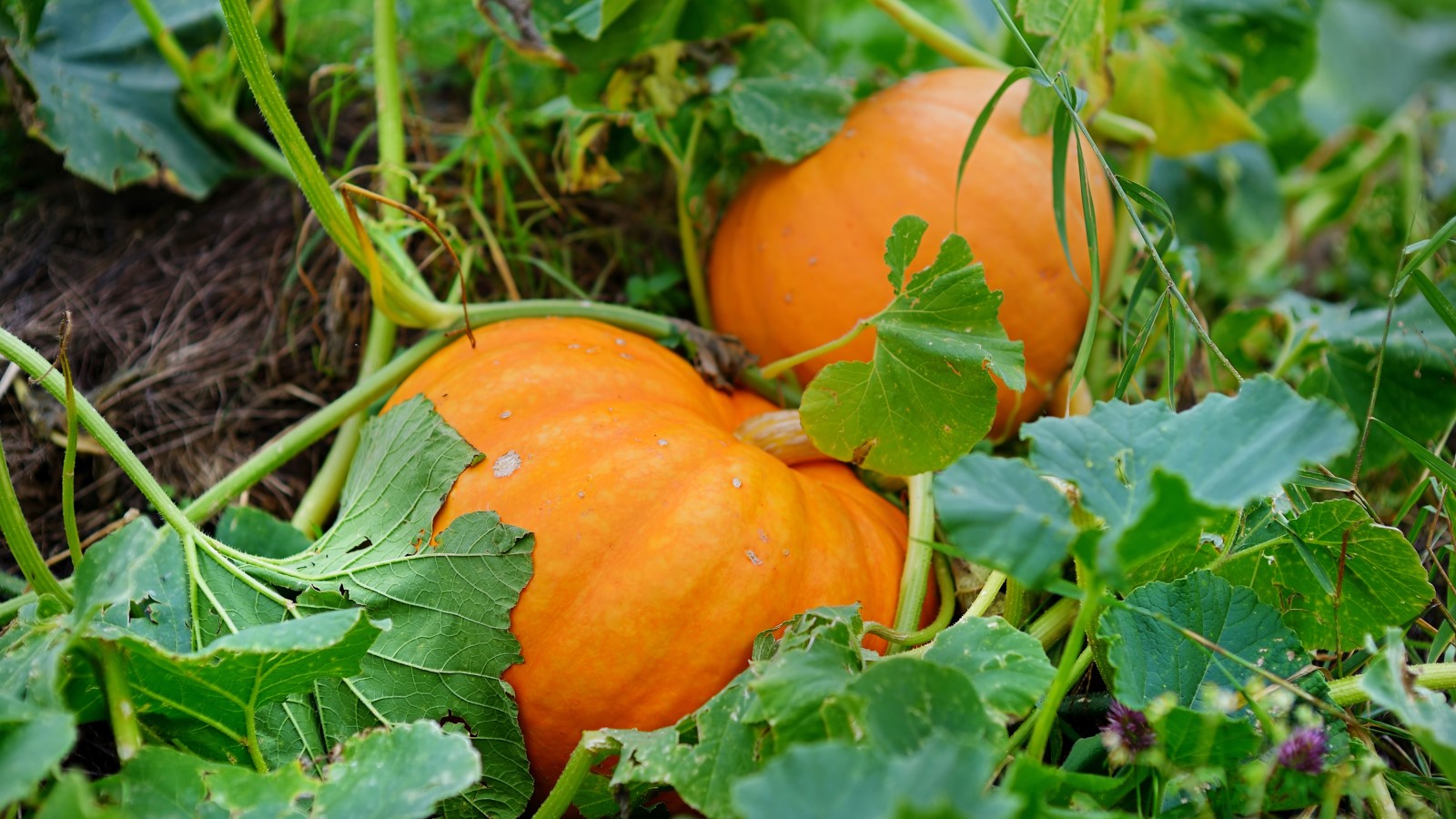

Pumpkins can succumb to many issues during their growing season and lots of problems may first show as yellowing leaves. Discolored foliage can be the result of watering problems, nutrient deficiencies, pests, diseases, or plants not happy in the spot they are growing.
If you are growing pumpkins and wonder why your pumpkins have leaves turning yellow, then it may be that you are falling foul of some of the common culprits. You will be happy to hear that many of the problems are easily fixable and shouldn’t stop you from getting a good pumpkin harvest.
Personally, I have grown pumpkins for many years both in kitchen gardens I worked in and at home. I’ve had yellow leaves on my plants and they’ve never stopped me from getting a good crop of fruits. One thing I always made sure I did was to remove the yellow or dying leaves to prevent them from causing additional problems.
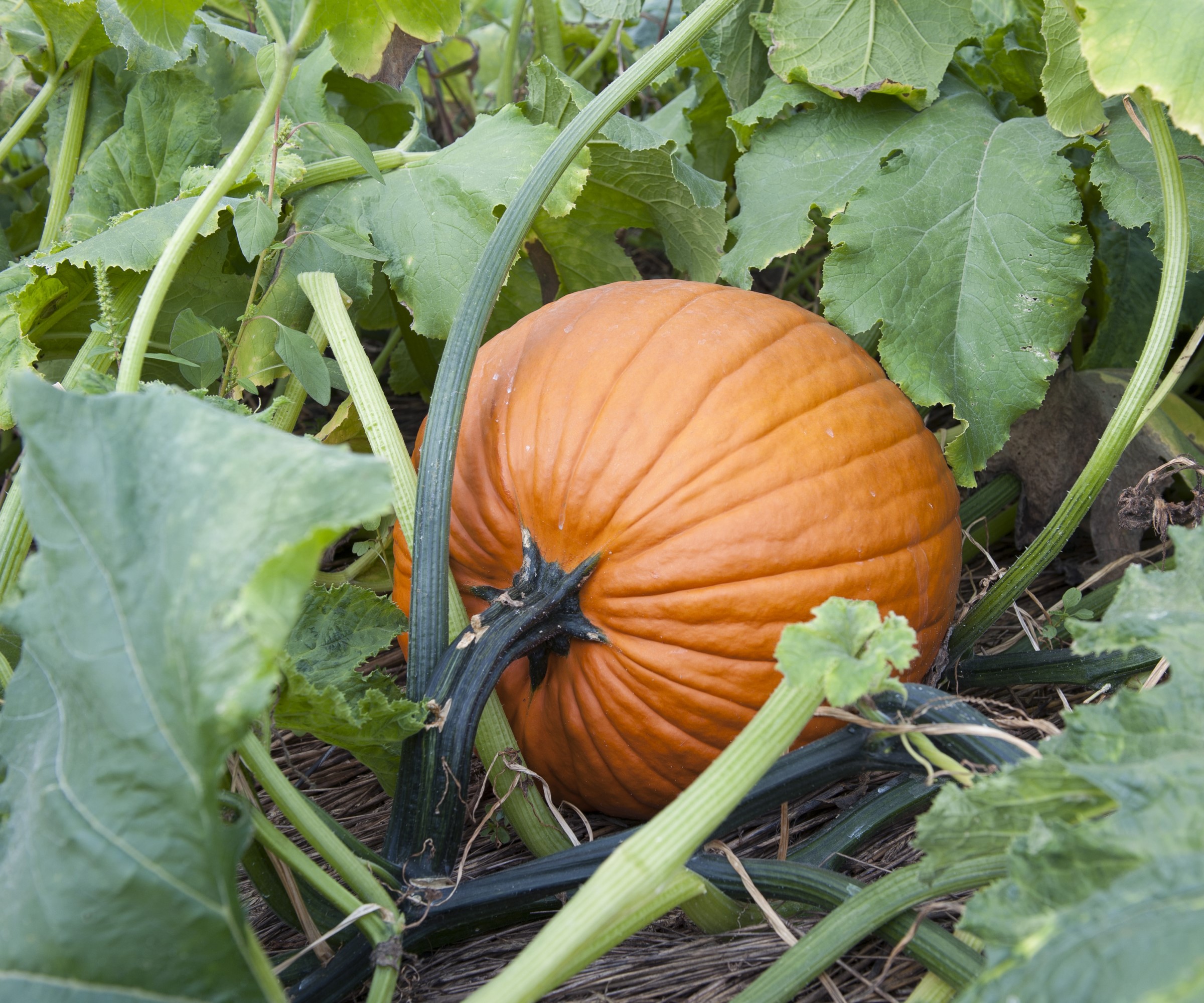
Pumpkins are usually ready to harvest around mid-fall
Why are my pumpkin plants turning yellow?
Pumpkins can turn yellow as they age, the older leaves changing in color naturally. If you see the oldest leaves on your vine start to change, then it may not be a reason to panic. However, a growing outbreak of yellow leaves, or younger ones discoloring, can be the plant showing that something is wrong. Then it requires a bit of investigation to find out what the cause is.
If you are wondering what the causes may be, along with how you fix yellowing pumpkin leaves, then we take a look at the main culprits that can be the reason your pumpkin plants have yellow foliage. There tend to be the same common factors that also cause squash leaves to turn yellow if you are growing them in your vegetable garden.
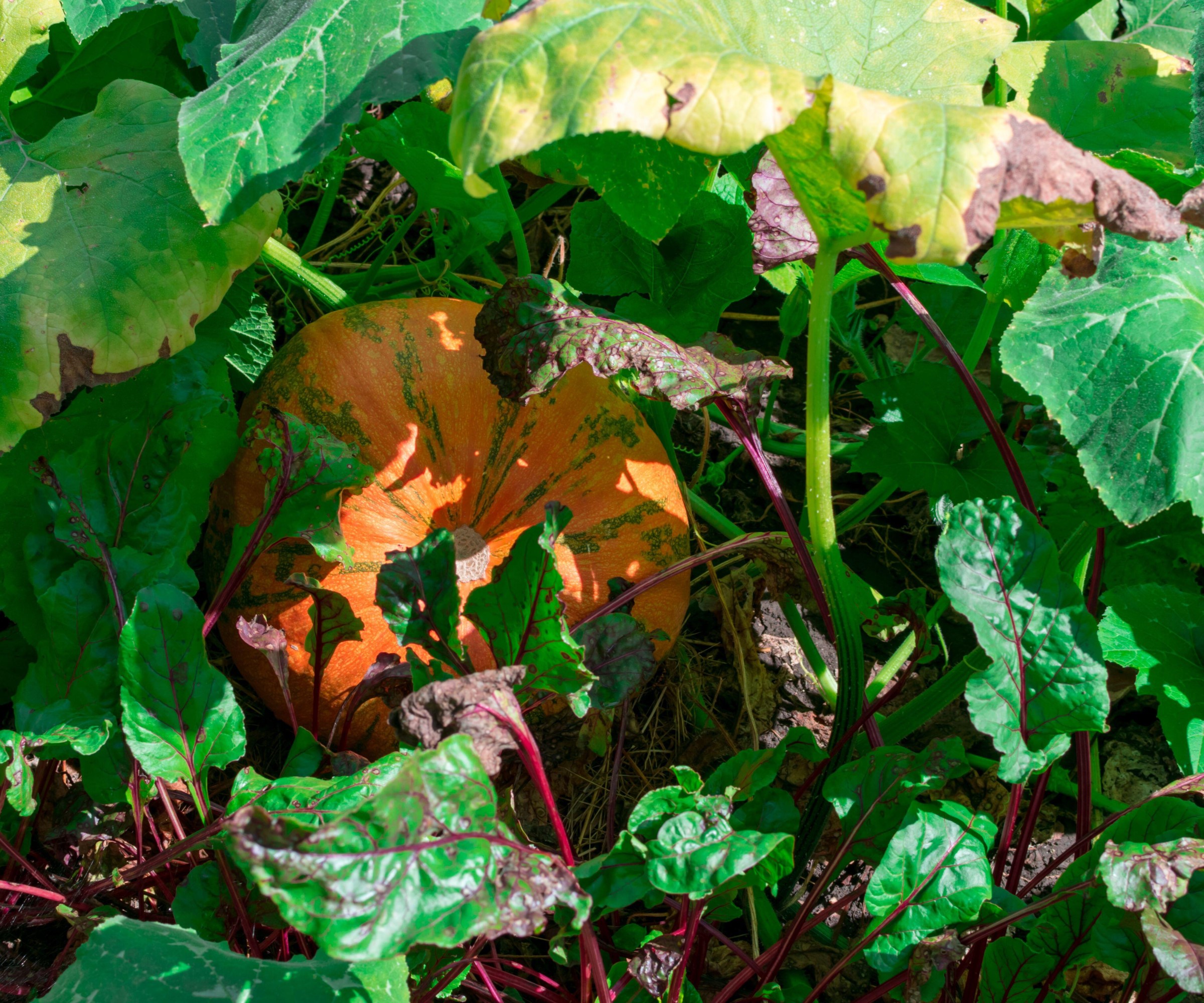
Yellow leaves are a sign that the plant is not happy
Water
Potentially the most common reason for pumpkin plants turning yellow is due to issues with watering. A shortage of water during the growing season can be a large problem for very-hungry pumpkin plants who need lots of moisture as they grow.
Pumpkin plants, like all plants, need water to move essential nutrients around and for photosynthesis. Judging when and how to water plants can be tricky, especially for novice gardeners, but a lack of water will cause leaves to turn yellow and also plants to wilt.
Amy McRitchie, a passionate vegetable grower, explains how yellowing leaves ‘tend to be an early warning sign of distress’ for plants, including when they are unhappy with their current watering regime.
She says: ‘Ensure you are neither overwatering nor underwatering the plant. Squash plants prefer consistently moist soil but not waterlogged conditions. Stick your finger into the soil to check moisture levels before watering.’
If you don't want to stick your fingers into the soil to check, use a soil moisture gauge to get an instant reading of the moisture levels in the ground. You find a range of soil moisture meters on Amazon.
This will help you make an accurate decision about when you need to water, with over-watering also a common garden watering mistake that has the potential to kill plants. Too much water can cause the roots to rot and yellow leaves are a sign of outdoor plants being overwatered.
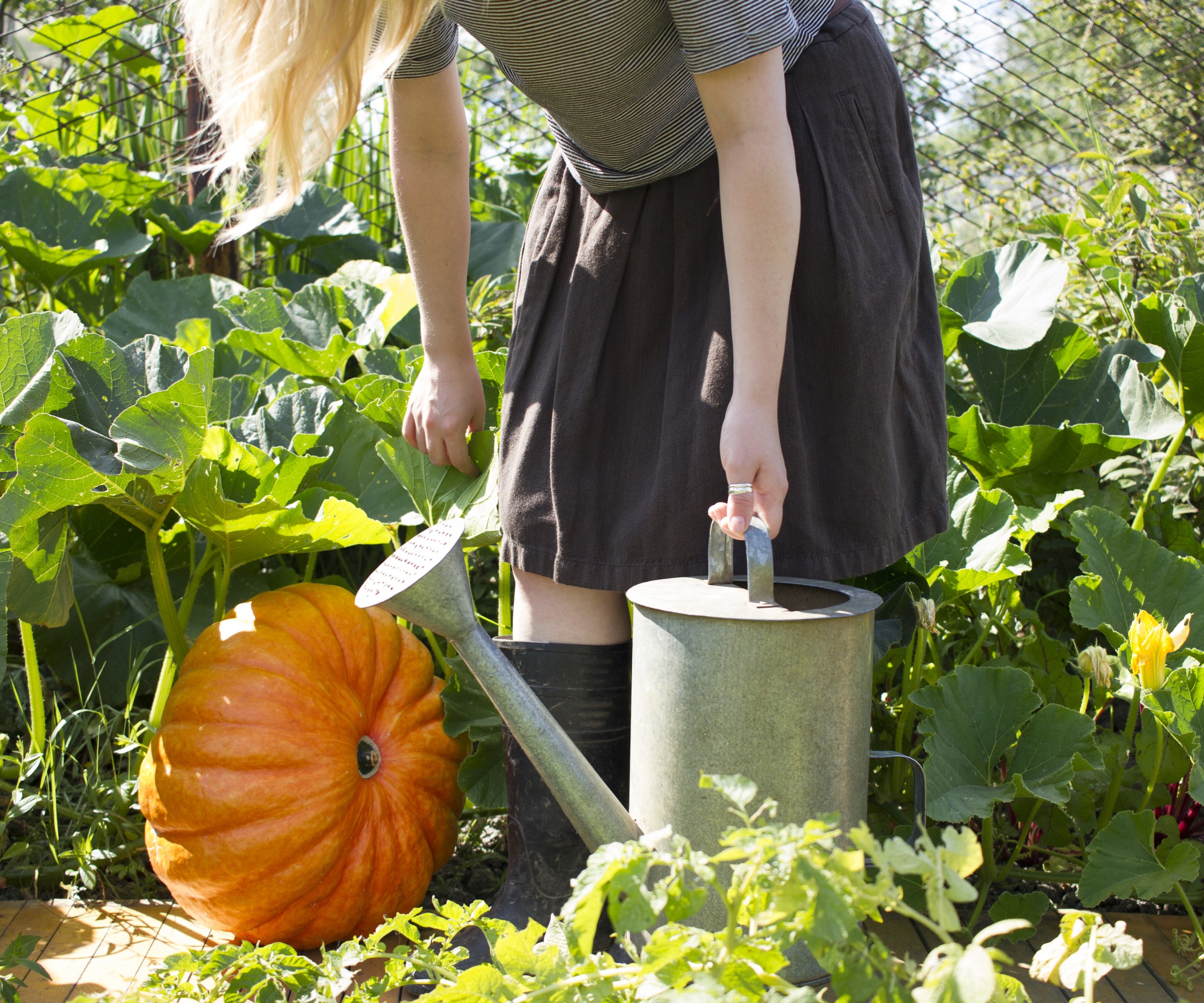
Pumpkins are vigorous growers that need lots of water
Nutrients
A deficiency of nutrients in the soil could be the reason for pumpkin leaves turning yellow. Pumpkins are hungry crops and need a lot of nutrients and water to grow, they need lots of nitrogen to put on a mass of foliage and then phosphorus and potassium to grow and ripen fruits.
Which part of the leaf is yellow could indicate what nutrient the pumpkin needs. If the entire leaf is yellow it indicates a lack of nitrogen, while yellow on just the margins or central vein is more a sign of a lack of potassium, magnesium, or iron.
Start adding nutrients into the soil even before the time comes when to plant pumpkins, as adding compost or well-rotted manure can help boost soil fertility and its water-retention levels. If not beforehand, mulching around plants can do the same.
If there seems to be a lack of nutrients causing the leaves to turn yellow, it is best to add a balanced fertilizer that is specially formulated for growing vegetables, such as Espoma Organic Garden-tone Vegetable Food, available at Walmart.
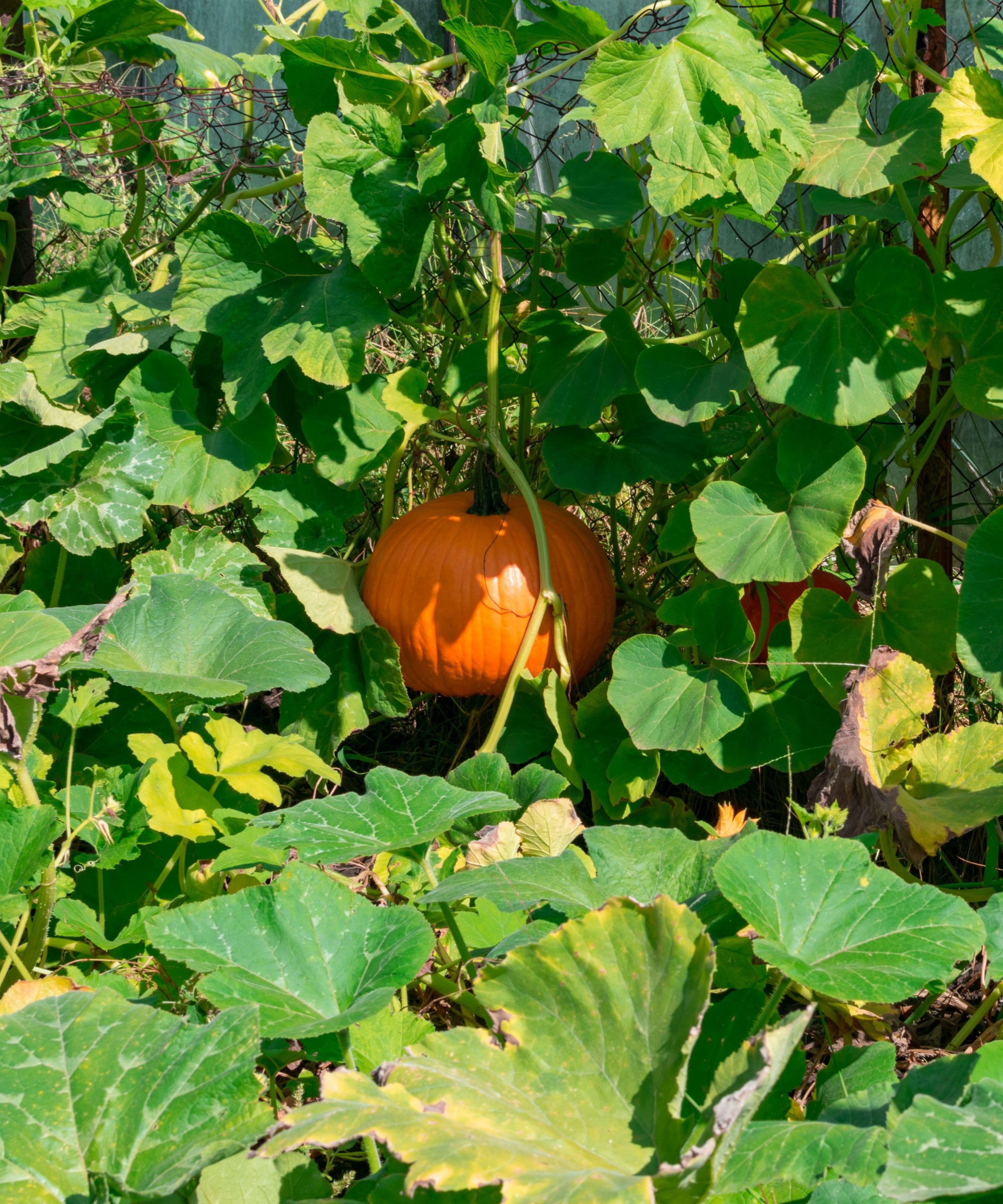
Feeding pumpkin plants can help prevent yellowing leaves
Sunlight
The location you are growing pumpkins in could play a part in leaves turning yellow. Pumpkins want at least six hours of direct sunlight each day, too little light can lead to the discoloration of foliage.
But so can too much sunlight. Plants growing in too much sunlight can suffer from the moisture in the leaves drying out too quickly, leaving them stressed and yellow. If you live in a very hot US hardiness zone then plants may need protection from excessive sun and heat that can stress the plants and essentially sunburn them.
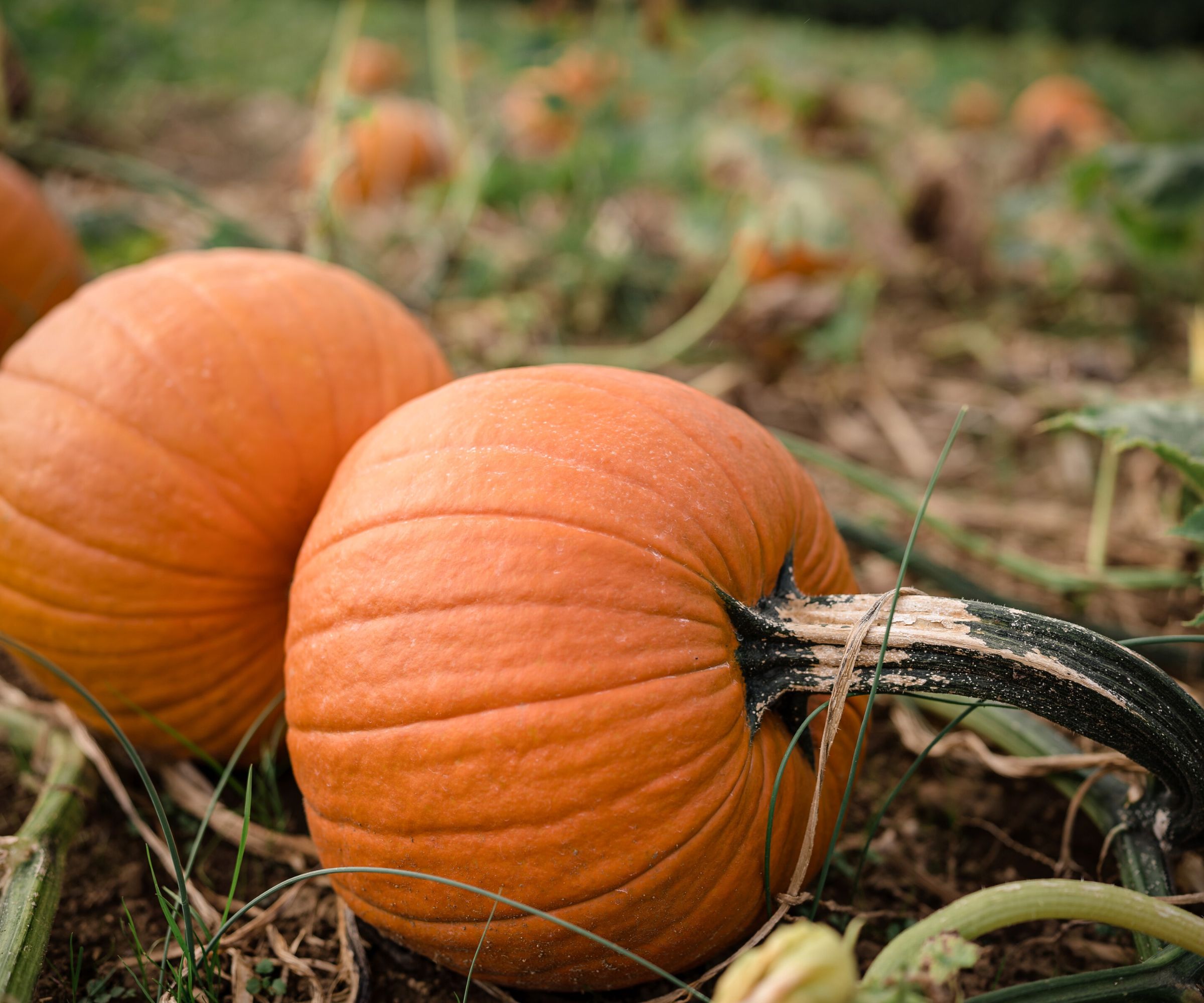
Pumpkins like a sunny spot but too much heat can dry out leaves
Pests & Disease
Pests including squash vine borer and squash bugs can suck sap from pumpkin plants and cause yellow leaves and wilting plants. Vine borers tunnel into the stems themselves and you may have to slit open the stems or remove sections of the plant to get rid of squash vine borers. Squash bugs can be knocked off the plant with a jet of water, which is also a good way to get rid of aphids that can suck sap from leaves and cause them to discolor.
Sue Bradley, a gardening expert, warns of powdery mildew, a fungal disease that can cause leaves to become yellow as well as covered in a white coating. If mildew does hit, she suggests: ‘At the first sign, cut off affected leaves and spray with foliar feed to help the plant to fight back and reduce the possibility of spores being spread by rain.’
Other potential diseases that cause pumpkin leaves to turn yellow are bacterial leaf spots, alternaria blight, and bacterial wilt. There is no cure for wilt and plants need to be lifted and destroyed, but you can get fungicidal treatments to deal with many other issues, such as Bonide Captain Jack's Copper Fungicide available at Amazon.

Sue Bradley writes about gardening, food and wildlife, and the fascinating people who are passionate about these subjects, for a variety of magazines.
FAQs
Should you trim yellow leaves on pumpkins?
It is recommended to remove yellow or damaged leaves on pumpkin plants. The leaves are potential attractors for other pests and fungal diseases, so removing them can help preserve the health of the plant. In addition, the leaves are pulling energy away from healthier parts of the plant. Remove yellow leaves with sharp and clean pruning shears and do not use any diseased leaves to make compost.
If you are growing pumpkins, then keeping them healthy is vital to get great fruits. Correct planting, watering, and maintenance all play their part, together with knowing how to prune pumpkins and when to pick pumpkins off the vine. However, rest assured that pumpkins are not overly-tricky crops to grow, and try not to let any of the issues mentioned put you off growing pumpkins as part of your backyard ideas.
Sign up to the Homes & Gardens newsletter
Design expertise in your inbox – from inspiring decorating ideas and beautiful celebrity homes to practical gardening advice and shopping round-ups.

Drew’s passion for gardening started with growing vegetables and salad in raised beds in a small urban terrace garden. He has worked as a professional gardener in historic gardens and specialises in growing vegetables, fruit, herbs, and cut flowers as a kitchen gardener. That passion for growing extends to being an allotmenteer, garden blogger, and producing how-to gardening guides for websites. Drew was shortlisted for the New Talent of the Year award at the 2023 Garden Media Guild Awards.
-
 Martha Stewart's nostalgic gray-green kitchen cabinet color is having a revival – and I predict it will be a huge trend in 2026
Martha Stewart's nostalgic gray-green kitchen cabinet color is having a revival – and I predict it will be a huge trend in 2026A timeless choice for the future – there is a lot to love about a serene gray green
By Jennifer Ebert
-
 What colors go best with butter yellow? 8 equally delicious shades to pair with spring's hottest color trend
What colors go best with butter yellow? 8 equally delicious shades to pair with spring's hottest color trendInspired to elevate your home this spring with chic pale yellows? Here are the best colors to complete your scheme
By Emily Moorman